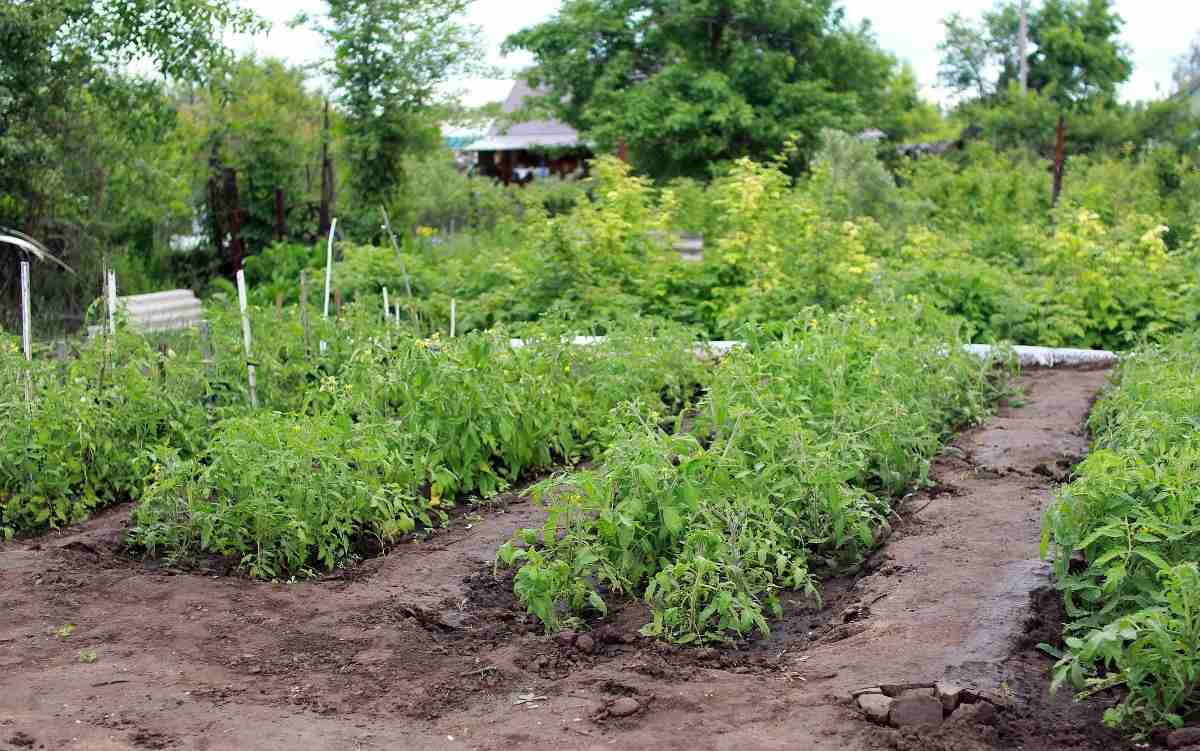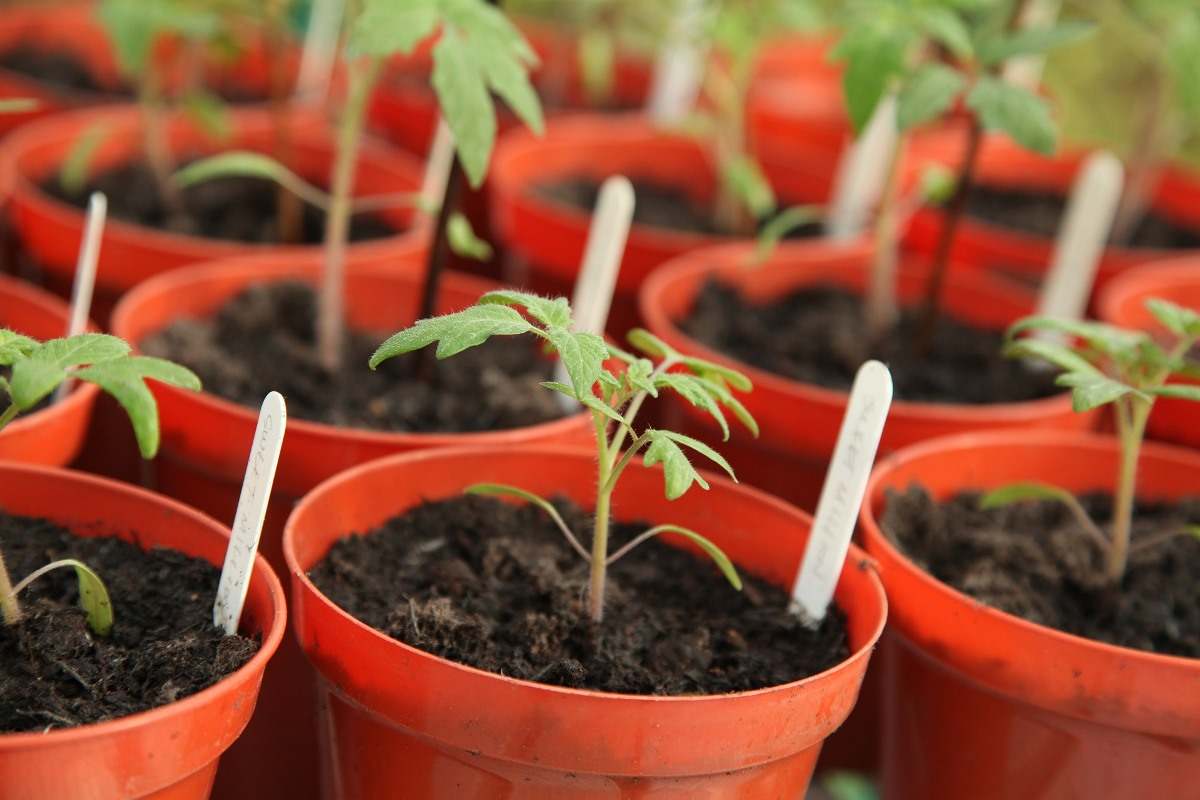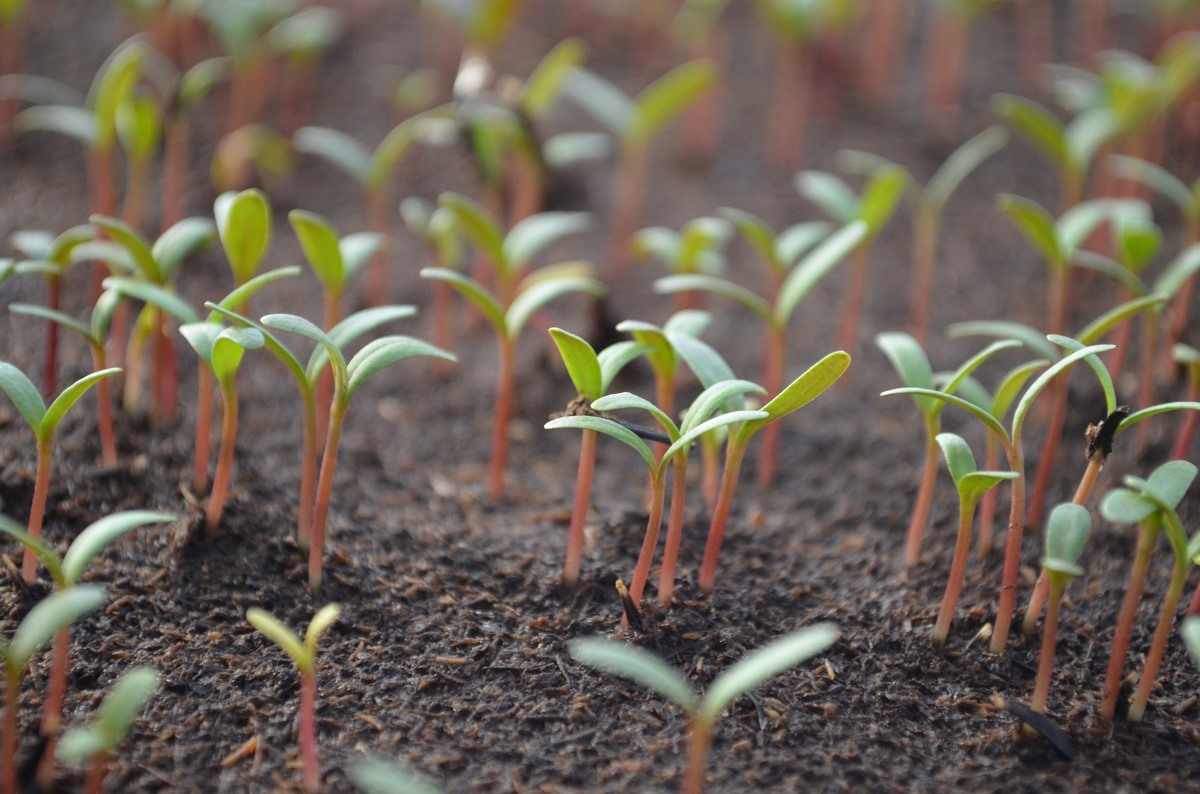Introduction to Tomato Seed Germination
Hi Readers! Having a homegrown tomato plant can make all the difference to your meals. Isn’t it? And with just a few simple tips, you can grow tomatoes in your home garden. The important commercial vegetable crop of India is Tomato. Fruits are eaten raw or in cooked form. It is a rich source of vitamin A, C, potassium, and minerals. The major tomato producing states are Bihar, Karnataka, Uttar Pradesh, Orissa, Maharashtra, Andhra Pradesh, Madhya Pradesh, and West Bengal. Let us discuss in detail about growing tomatoes from seed and tomato seed germination procedure.
A step by step guide to Tomato Seed Germination, Spacing, and Plant Care
The sweet-smelling garden growing tomatoes are an essential part of a balanced and healthy diet owing to their nutritional value. And growing tomatoes from seeds at home can be done easily. You can grow delicious and juicy tomatoes in containers without much effort, even if you are short on space and do not have a garden. So, let’s dive into the topic, and let’s get started!
Types of Tomatoes
Tomatoes are available in a wide variety of sizes and colors. The choice also depends on how you will use this versatile fruit in the kitchen. For example, Roma tomatoes are not very good eaten fresh but are well suited for sauces and ketchup. Types of tomato can be classified according to their growth habit:
Determinate tomatoes: Determinate tomatoes are plants that grow to pre-determined height. They are good choices for canning and sauce-making.
Indeterminate tomatoes: Throughout the growing season, Indeterminate tomatoes increase in height. The fruits on these plants are produced continually through the season along with the side shoots of the plant. If you want to spread out the harvest over a longer period of time indeterminate tomatoes are the choice.
Tomato Plant Care and Requirements

Suitable soil
Tomatoes thrive in almost all types of soil. However, well-drained, sandy or red loam soils rich in organic matter is best suited for the production of early crops. Loam and sticky soils have greater water holding capacity and are more suitable for longer production seasons. Soils rich in organic matter and mineral nutrients are suitable for increasing yields. 5.5 to 7.0 is the most suitable soil pH range for tomato production. It can tolerate moderate acidic and saline soil. Avoid cultivation in high acidic soils.
Suitable climate
Tomatoes are very sensitive to colds. In most varieties, flowering usually does not develop below 15°C or above 35°C. The best range is between 21°C and 24°C. When the soil temperature is below 10°C or exceeds 35°C, it will not germinate. The optimal range for tomato germination occurs between 15.5°C and an average soil temperature of tomato is 29°C. Temperature below 10°C adversely affects plant tissues thereby slowing down physiological activities.
Land preparation
Land preparation is necessary to grow successful crops. For tomato plantation, it required a well pulverize and leveled soil. To bring soil to a fine tilth, plough land for 4-5times, then planking is done to make soil level. At least one month prior to planting the crop, rotten farm manure should be applied to 10-12 tons of land per acre to maintain proper physical and fertility conditions. It takes five to six times to prepare the seedbed.
The cultivated land must be well plated and should be thoroughly leveled to evenly distribute the water. A raised bed of 1.5 meters wide should be made. For that, prepare a raised bed of 80-90cm width. To destroy harmful soil-borne pathogen, pest, and organism, soil solarization is carried out. It can be done by using transparent plastic film as mulch.
Watering

Tomato is very sensitive to water application. For best results, water little and often. Heavy irrigation provided after a long spell of drought causes cracking of the fruits. Hence it should be avoided. Light irrigation should be given 3-4 days after transplanting. Irrigation intervals should be according to soil type and rainfall, irrigation should be given 7-8 days interval during July/Rainy season, 10-12 days during October-November, and 5-6 days during summer. Flowering and fruit development are the critical stages of tomato therefore, water stress should not be given during this period.
Fertilization
The general recommendation for the application of chemical fertilizers is 46 kg of nitrogen per hectare, 60 kg of phosphorus, and 25 kg of potash. For better results, all phosphorus and half of the nitrogen and potassium fertilizer should be applied before transplanting the tomato seedlings. The remaining half of the nitrogen and potassium fertilizers should be applied 6-8 weeks after transplanting.
How to Prepare the Soil for Growing Tomato Plant Organically
For growing a tomato plant organically, you need to start with healthy soil. The most important component in the soil is the organic matter, such as compost, manure, or peat moss, which is the best option because it contains decayed microorganisms of previous plant life. Those microorganisms supply plants with the nutrients they need. You can create your own compost pile by designating an area or bin where the organic matter will decompose. Or you can buy it in bulk if you have a large garden, or use bagged compost available at garden centers and home improvement stores. Using a commercially available soil-testing kit every six months or annually will help you monitor the effect of soil amendments. Tomatoes need a balanced ratio of major nutrients.
Tomato Seed Germination Process
For better yield of tomato, you must be aware of seed germination prcoess of tomato.
Germination is the first step toward making a plant when a seed breaks open to form a root, then a stem, then leaves, at which point it can be called a seedling. If given optimal conditions, typically tomato seeds germination can be done in 5 to 10 days. You’ll know seeds have germinated as soon as you see green plants emerging from the growing medium.
The rate of germination of tomato seeds for a particular packet depends on the source and age of the seed. This can be called the viability of the seed. Typically, the older the seed, the lower the germination rate and less viability. Increase your chances of getting the number of plants you desire by planting 25% or more seeds than you actually think you’ll need. Some may not germinate, but you’ll still have what you need.
If you have issues with germinating your tomato seed, the temperature may be the problem. Ideal temperatures for germination of tomato is 21°C to 27°C. Temperatures much lower than 21°C will cause slower germination, and if temperatures dip far below, germination may not occur at all. Likewise, hot temperatures well above 27°C can also cause germination to fail. If you need to increase temperature, a plant heating mat is a good helper. For best germination results, keep the pots in a warm and dark place. The seedlings should appear in 10 to 14 days.
Tomato Seed Treatment
Some of the best seed treatments for tomatoes that help maximize your crop’s performance in the field or greenhouse.
Tomato Seed Pelleting
Pelleting your tomato seed with a high-quality lightweight pellet improves singulation when planting. In addition, seed pelleting makes it easier to handle your seed and may be combined with crop protection products to help protect your plants as soon as they emerge.
Hot Water Treatment
Inoculated seed samples were wrapped in muslin and immersed in a water bath at 45, 50, 55, or 60°C for 30 minutes. The seed was air-dried and seeds from each temperature were tested for the presence of the pathogen. The untreated inoculated seed was used as a control. Fireball seed was heat-treated at each temperature and 4 replicates of 100 seeds were given a standard germination test. The untreated seed of each variety was germination tested as a control. Hot water treatments have been used to control seed-borne pathogens.
Hot water treatments of tomato seed did not completely control pathogens associated with seed. The higher temperatures give a higher percentage reduction of infestation, but the germination was reduced.
Tomato Seed Spacing
For healthy productive plants, the spacing of tomato plants is an important component.
Tomato Spacing by Garden Type
Plant spacing also depends on where you’re planting, whether in the ground, in a raised bed or in containers.
In containers: Except for the truly compact container tomato plants, which can be grown in containers as small as 12 inches wide and deep, tomato plants should be grown one per container in large containers at least 18 or 24 inches wide and deep. It’s tempting to fill a container with more than one tomato plant, but your tomatoes will benefit from having their own space. You can supplement with other low growing plants like lettuce or marigolds that won’t compete with your tomato.
You may also check this: Growing Mint In Backyard.

In-ground: If you’re planting tomato seed directly in the ground, you may have more space and be planting in rows. In that case, space your tomatoes 18-24 inches apart along a row, but space your rows about 36 inches apart. This will leave enough room for you to work between rows. If you’re planting more intensively in the ground, not in rows, follow the 18-24 inches guide throughout, but consider how you will reach the plants without trampling them.
In raised beds: Guidance for planting tomato seeds in raised beds is similar to planting intensively in the ground, following the 18-24 guide. The depth of your raised bed will play a role, too. The deeper the soil, the more available nutrients for your tomato plant and space for your plants’ roots; in deeper soil (12 inches or more), you may be able to get away with slightly closer spacing.
Correct space allows for
- The right amount of sunlight to get to plants
- Good airflow around plants
- Ideal distribution of resources including water and nutrients
- Proper support of plants via stake, cage, or trellis
- Ease of harvesting
Tomato Seed Sowing Method
Tomato seed sowing should be done thinly in lines spaced at 10-15 cm distance. Seeds are covered with a fine layer of soil followed by light watering by water can and sown at a depth of 2-3 cm. To maintain the required temperature and moisture, the beds should then be covered with dry straw or grass or sugarcane leaves.
Tomato Seed Rate
Use a seed rate of 100gm for preparing seedling for sowing in one-acre land. Seeds should have a minimum purity of98% and germination of 70%.
Transplanting Tomato Seedling
You should not miss this: Growing Organic Aspagarus In Containers.

At least 6 to 8 weeks before you plan to transplant them outside the seeds must be sown. For example, if you plan to transplant the tomato seedlings by early June, the seeds must be planted indoors in mid-April. Once your tomato seedlings are five to six inches in length, it’s time to take them out of their small indoor pot and transplant them to spacious and deeper pots or to your home garden outdoors but, that should receive 6 to 8 hours of good sunlight. This is also called hardening off the plant. Follow the below steps to easily transplant young tomato seedlings.
- A good tip to remember to decide on transplanting is to wait until the seedlings are three times the length of the pot.
- Start with large clean pots. Mix a well-draining type of soil with compost. Choose the healthiest plants to transplant outdoors. To promote a healthier tomato plant, pinch off the lowest branches of the plant with a healthy stem with a few branches at the top.
- Loosen the root area of the young plants and lift them with some soil at the roots. Do not pull the plants off the stems.
- Transplant the tomato seedling into the new container that is filled with potting soil and covered with soil leaving some part of the stem outside. Bury two-third of the plant inside the soil while transplanting to grow stronger tomato plants and bigger tomatoes.
- Water the seedlings immediately after transplanting for letting them settle well. Keep watering once every two days to keep the top layer of the soil moist.
That’s all folks about tomato seed germination and planting process in your garden. In case if you are interested in this: Zucchini Cultivation.